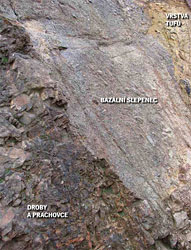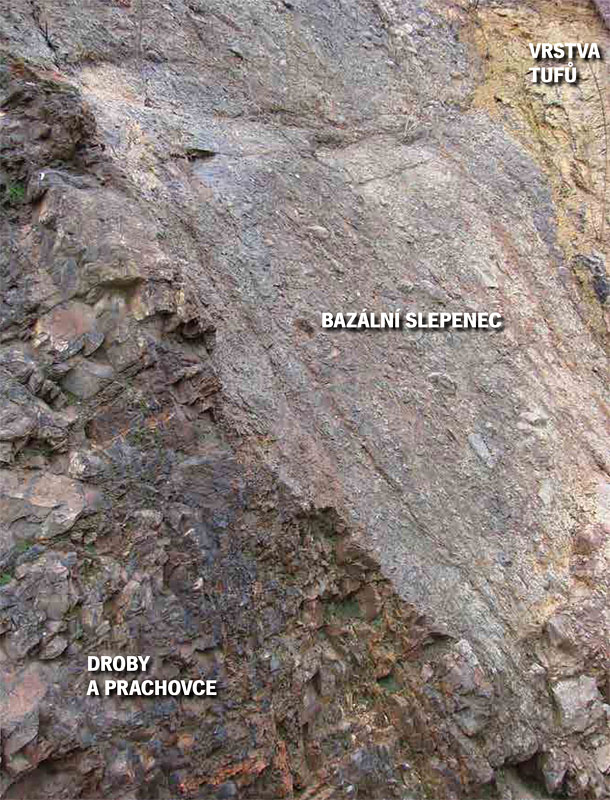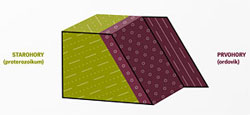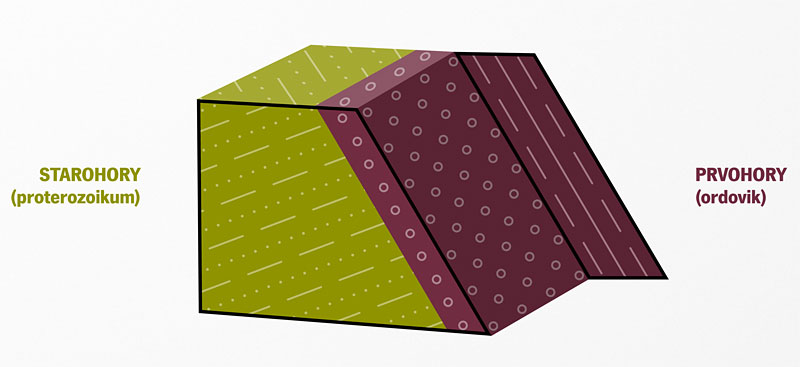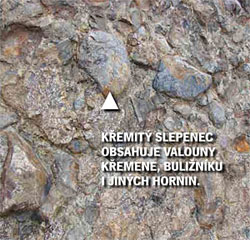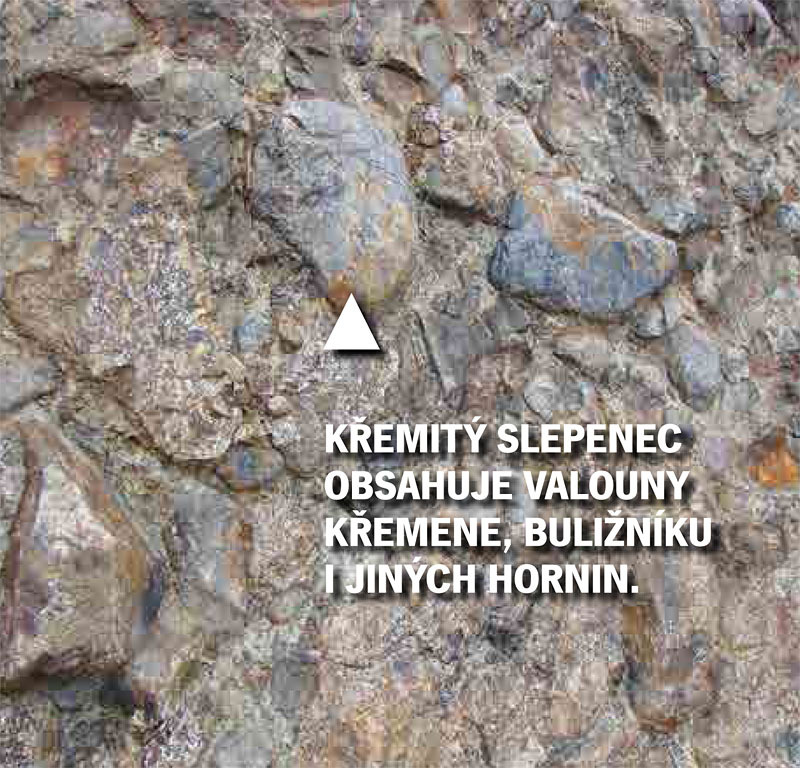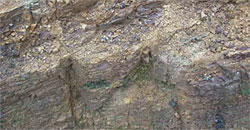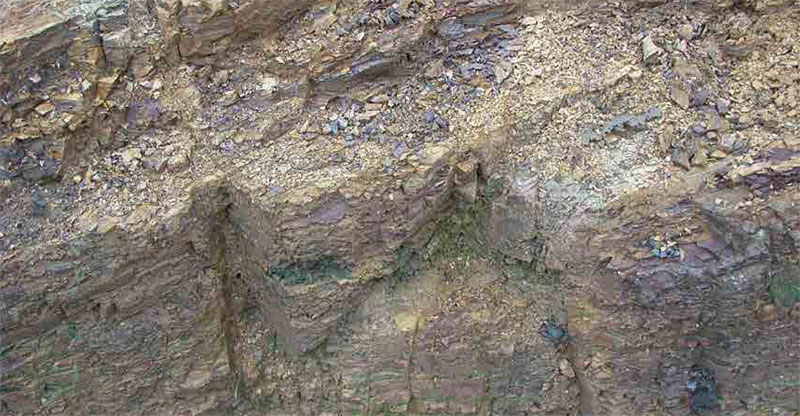Zakázanka
Menu- Welcome to Zakázanka
- In search of bygone eons
- An example of a reverse fault and a crush zone
- Folds
- A fault separating two geological periods
- Iron ore
- Exposed boundary
- What is growing here (1)
- What is growing here (2)
- Little warm lovers
- Sun lovers
- Bedrock
- Fluvial sandy gravels of the vineyard terrace
- Local denizens of the air
- A window into Prague's geological past
- Iron ore on the zoo grounds
- The rock face bears silent witness
- Regeneration of the rocky steppe
Exposed boundary
This is where you can admire the flawlessly exposed boundary between the Proterozoic and the Paleozoic, two stretches of geological time hundreds of millions of years ago. The boundary is not horizontal, having been affected by the Cadomian Orogeny. Such a boundary is called an "angular unconformity" by geologists.
The Paleozoic conglomerate (from the Ordovician Period) is 30–50 cm thick here. It is firmly attached to the underlying rock (formed by Proterozoic wackes and conglomerates), so the boundary is not very conspicuous. What is conspicuous is the upper layer surface of the conglomerate.
Two geological times
Upper Proterozoic rocks (wackes and siltites) are blanketed with a layer of Paleozoic conglomerates (from the Ordovician Period) 30-50 cm thick. The binding agent is a quartziferous conglomerate, a fact attested by conspicuous quartz and quartzite pebbles.
The conglomerate layer
In the places where it occurs on the zoo grounds, the conglomerate layer has a relatively constant thickness. This indicates that it settled on level, rocky surface. As the sea advanced, the underlying rock was leveled as the surf beat against the rocky shoreline. If you are looking at the conglomerate layer, you are looking at a rocky beach on a primordial sea.
Volcanic tuffs and tuffites
The presence of volcanic tuffs and tuffites (water-deposited volcanic ash) in the layer above the conglomerate indicates that they were deposited in a relatively calm marine environment. They have not been found to contain fossils.
